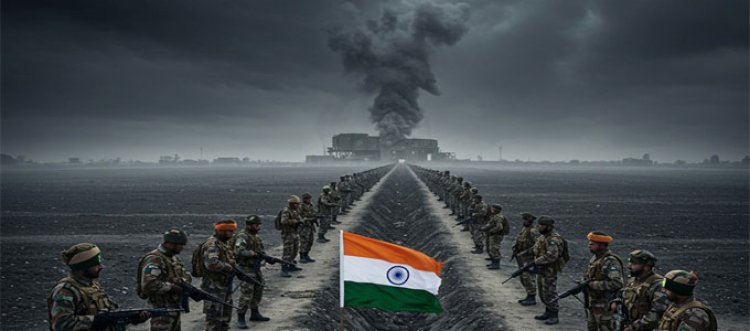Was a Nuclear Threat Behind the India-Pakistan Ceasefire? A Chain of Mysterious Events Raises Alarming Questions
The recent ceasefire agreement between India and Pakistan has sparked widespread speculation and analysis. According to social media posts, independent analysts, and foreign media reports, the ceasefire

New Delhi – The recent ceasefire agreement between India and Pakistan has sparked widespread speculation and analysis. According to social media posts, independent analysts, and foreign media reports, the ceasefire may have been influenced by more than just conventional diplomacy—possibly by the threat of a nuclear crisis.
Earthquake in Pakistan or a Nuclear Event?
Just before the ceasefire, Pakistan experienced a 5.7 magnitude earthquake in a region suspected to be near nuclear facilities. While the official explanation pointed to seismic activity, defense and geostrategic experts hinted at the possibility of a subterranean explosion—possibly a failed nuclear test or an accident. Though unconfirmed, such an event could carry severe implications for regional security.
Viral Explosion Video and Suspicious Air Activity
Simultaneously, a video showing a large explosion in a mountainous area went viral on social media. Users linked the footage to rising tensions between India and Pakistan.
Adding to the mystery, a flight from Egypt was tracked flying towards Rawalpindi despite airspace restrictions. Rawalpindi houses the Nur Khan Airbase—one of Pakistan’s most sensitive military installations, close to its Air Force and Nuclear Command centers.
BrahMos Missile Pressure and U.S. Involvement
Reports suggested that India leveraged the strategic threat of its BrahMos supersonic missile to pressure Pakistan during the standoff. The missile's precision and speed made it a potent tool in psychological and military deterrence.
American media claimed that former U.S. President Donald Trump intervened diplomatically, fearing escalation into a nuclear exchange. Trump later publicly declared that he had “stopped the war,” indicating how close the situation came to disaster.
Targeting Nur Khan Airbase?
Some unconfirmed reports claimed that India may have conducted a limited strike near the Nur Khan Airbase. The base, due to its dual military and nuclear command significance, would be a high-value target in any serious conflict. The implications of such a move—if true—are extremely grave.
Radiation Reports and the "Boron" Theory
Soon after the quake, social media buzzed with unverified reports of radiation leaks. References were made to India’s past nuclear tests under the code name "Buddha Smiled Again." Claims of damage to Pakistani nuclear installations also circulated online.
Interestingly, a U.S. Department of Energy aircraft—equipped for radiation monitoring—was allegedly seen flying over the region. Further speculation pointed to the Egyptian aircraft possibly carrying boron, a chemical compound used to neutralize radiation during nuclear leaks.
Nuclear Threats and Emergency Diplomacy
Allegedly, Pakistani Army Chief General Asim Munir indicated willingness to use nuclear weapons if necessary. This triggered urgent U.S. diplomatic engagement, and a direct hotline was reportedly activated between Indian and Pakistani military officials to prevent escalation.
Ceasefire Declaration and Trump’s Claim
Eventually, under international pressure, especially from the U.S., a ceasefire was established. President Trump later announced he had "averted a catastrophe," suggesting that both countries were on the brink of a major conflict.
Was a Nuclear War Prevented?
The series of events, while largely unofficial and speculative, paint a picture of a rapidly escalating situation. The India-Pakistan ceasefire, therefore, might not just be a product of diplomacy—but a narrow escape from nuclear confrontation.
Disclaimer (Prativad.com)
This report is based on social media posts, independent analyses, and various international media reports. Prativad.com does not claim official confirmation of the events described. The purpose of this article is to inform the public of the possible developments. We do not intend to defame any country, agency, or institution. Readers are advised to verify facts through official sources before drawing conclusions.






















